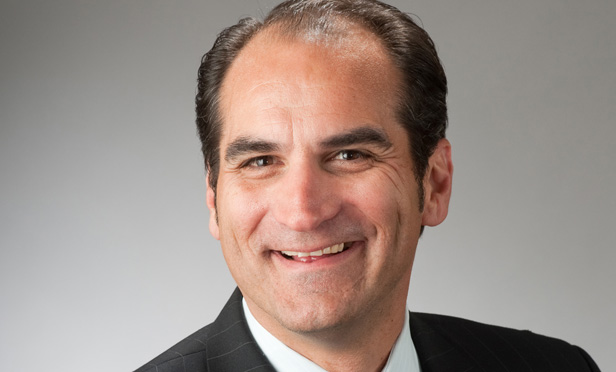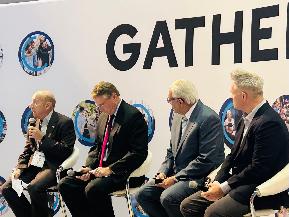 Hernandez: “I wonder if, at 4.7% unemployment, we’re at the saturation point.”
Hernandez: “I wonder if, at 4.7% unemployment, we’re at the saturation point.”
HOUSTON—The bumpy recovery continues along, with the latest bump coming in the form of the Bureau of Labor Statistics’ May job numbers. Not to rub it in, but you might recall that there were a measly 38,000 non-farm jobs posted last month, as GlobeSt.com reported.
Well, buck up, you fans of economic vitality. Fresh from RECon 2016, we caught up with Nick A. Hernandez, managing director of Transwestern’s retail services group, whose perspective is decidedly sensible . . . and optimistic.
GlobeSt.com: So what was your takeaway from, Vegas, Nick?
Nick Hernandez: The biggest takeaway from Vegas is that the development pipeline is growing significantly. This after taking what we’ll call a breather, from roughly 2008 until a year ago, when the magnitude of development shrunk to almost non-existent levels and slowly started to come back. There was some big box development during that time, and that comprised the majority of retail development. There was also some inner-city activity, mostly mixed-use, but not enough square footage that it would add to the total.
GlobeSt.com: And this year things were different?
Hernandez: In Vegas I saw site plans for 400,000- and 500,000-square-foot power centers, and it’s been awhile since we’ve seen that, and those plans were very viable and more likely to happen than not. In 2007, I remember seeing site plans where I wondered if it would ever get built or walked away saying that’s a crazy idea. This year they seemed well-thought-out. I was happy to see that.
The biggest challenge as I see it over the past four years or so has been that really good space is hard to find and rents have increased because supply has decreased. Having new supply will keep the rental market in check and provide opportunity for our clients to expand.
GlobeSt.com: Are power centers the dominant play?
Hernandez: No, and of course mixed-use is substantial. But suburban power centers are multiplying and we’re seeing it nationally.
GlobeSt.com: Let’s talk about retail against the backdrop of the anemic May employment numbers.
Hernandez: I was quite surprised.
GlobeSt.com: A lot of us were.
Hernandez: Maybe the cycle has run its course and we don’t want to get too excited about the recovery because all at once we’ll get a jobs report that’s off. But I think we’re in a new normal. I wonder, John, if at 4.7% unemployment we’re at that saturation point, where the numbers won’t get any bigger. The big growth we’re used to seeing, the 3% to 5% growth, might be giving way to good growth being 2% or 3%. Maybe it’s just different than it used to be.
GlobeSt.com: But I have to ask the question . . . We had this economic surprise in January. Now we have this surprise. Is it too much to connect the dots from one to the other?
Hernandez: It’s interesting because we’re in an interconnected global economy. We’re treading new territory. I was in China for the first time in December of last year and I’m going back soon, and seeing what theoretically is slow over there as compared to what we’ve got going on here was a dramatic awakening for me. Maybe we’re not in a high-growth cycle, but we’re moving at a solid pace that makes me comfortable right now. I don’t see us going backward but I don’t see it booming either. It’s nice and solid, and I would rather have that. The severe peaks and valleys get tough.
GlobeSt.com: So no worries over the timing of the projects you saw in Vegas?
Hernandez: No one’s building anything unless it’s significantly pre-leased, so I don’t have much fear. It’s not like they’re building an apartment complex and they won’t know if someone is going to live in it until they’re done.
For bank financing, retail developers need a minimum of 50% preleased and, if you can get to that, you’re going to get significantly over that once construction starts and you validate your project.
Remember too that we’re not seeing weaker retailers, based on the numbers they reported to Wall Street, on these site plans. Those who are weaker are probably more inwardly focused, trying to repair whatever they can in merchandising or whatever the problems might be. The strong ones are out making deals. Of course that’s not to say that a strong one today won’t be a weak one tomorrow.
GlobeSt.com: Right. Can anyone say Sports Authority?
Hernandez: Exactly.

















 Copyright © 2024 ALM Global, LLC. All Rights Reserved.
Copyright © 2024 ALM Global, LLC. All Rights Reserved.